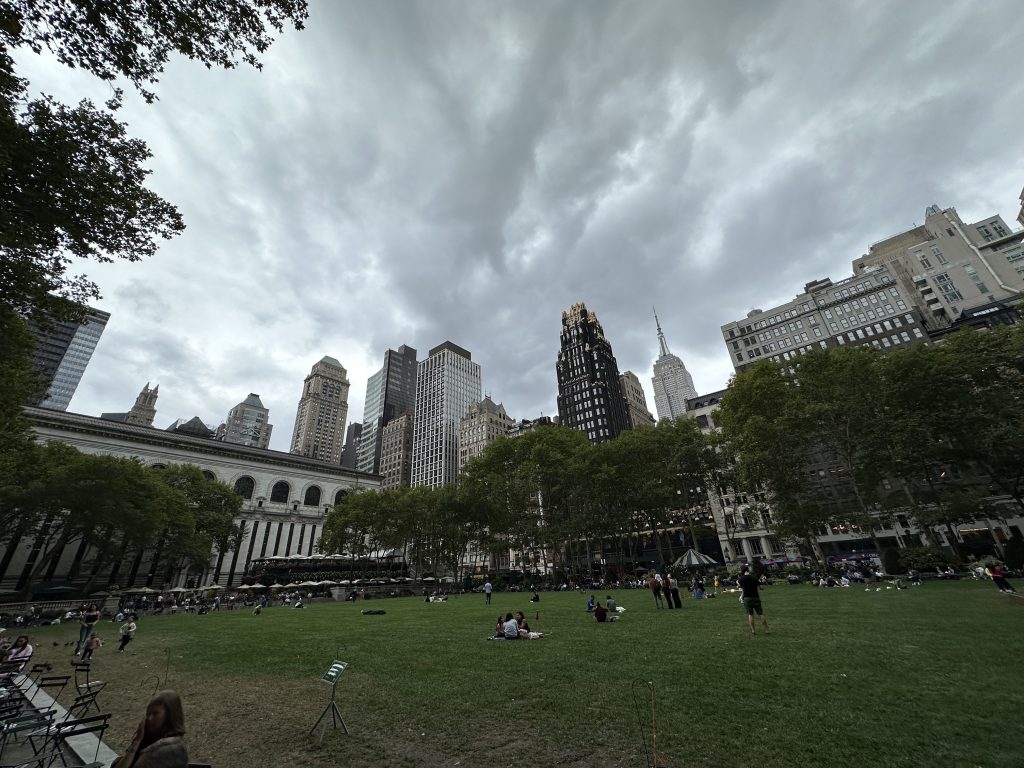
Sitting alone in the park might be a dreaded activity for some people, but Bryant Park has a magical power for solo seaters; many people are comfortable sitting alone in it. This unique comfort in solitude amidst the bustling heart of New York City can be attributed to the thoughtful urban design and planning principles applied to the park-like William H. Whyte or Jan Gehl.
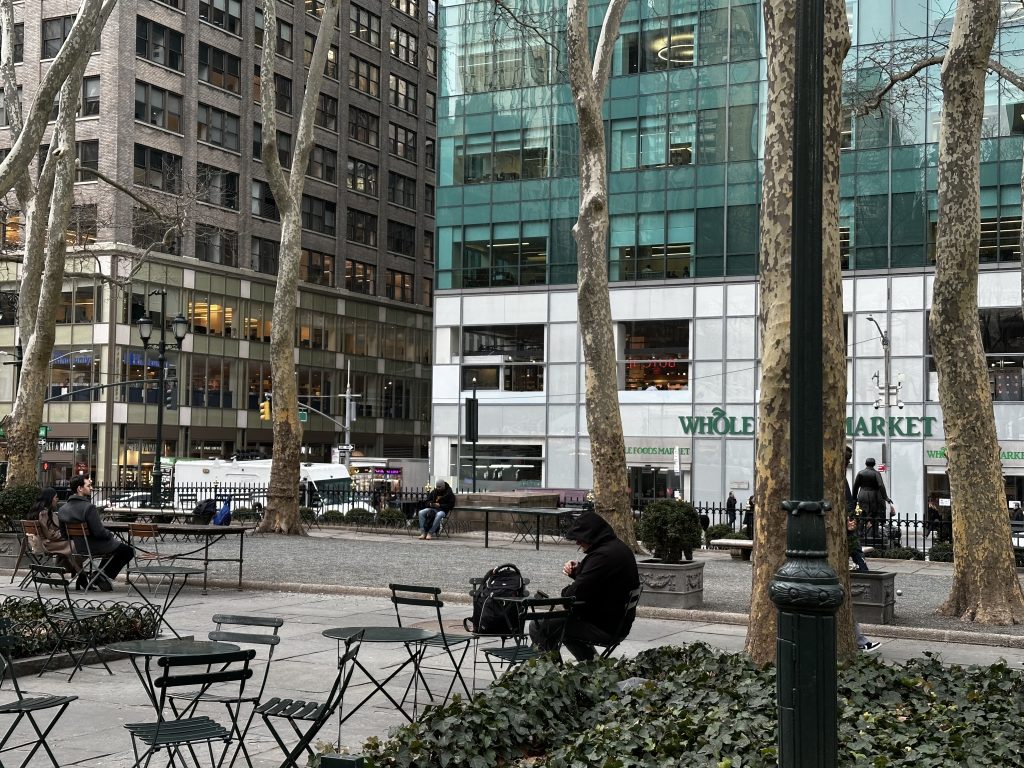
“You can see a lot just by observing” is a way to learn and maybe unlearn the successes or failures of a public space—in this case, a park—by looking at how people use or do not use the public spaces. As a frequent solo seater, I usually start sitting down there with a drink or food; that day, I decided to have a quick lunch—turmeric chicken and farro Soup with iced dirty chai – not a common combination, but for me, perfect for a 9oC (48F) and to begin the observation on a random weekday afternoon.
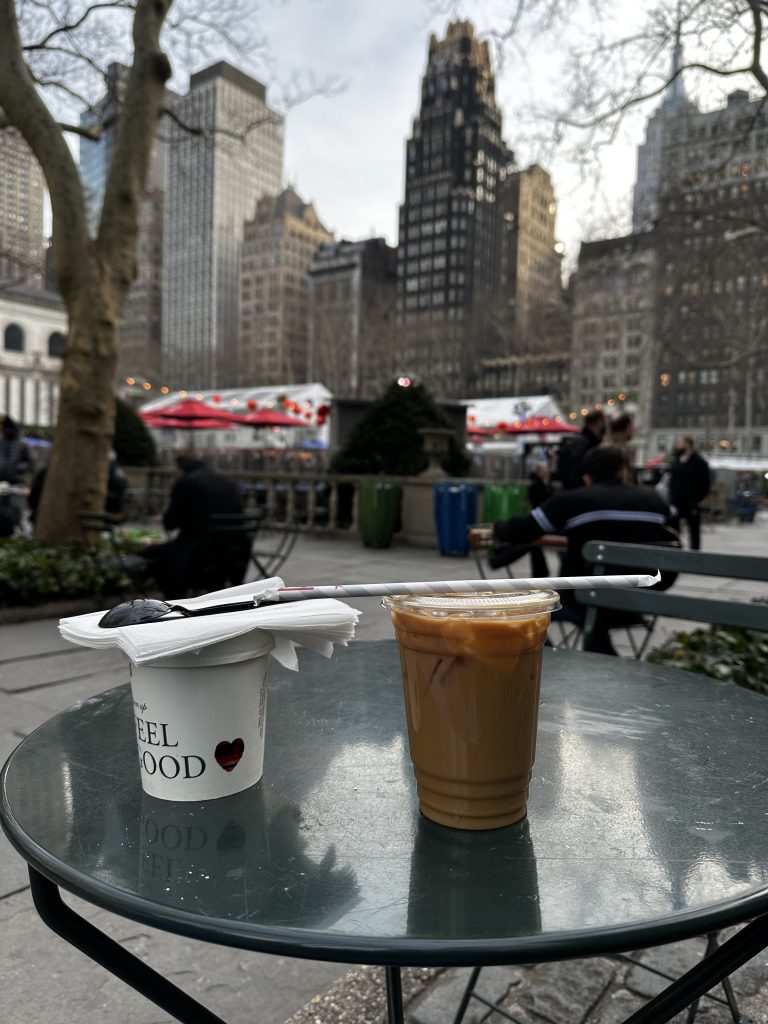
Bryant Park is a fascinating case study in urban space utilization. It reflects Whyte’s “Start with Petunias” theory, which suggests that minor, aesthetic improvements in a public space can significantly enhance its usability and appeal. The park is not just a patch of green but a canvas of social interaction and personal tranquility. From individuals strumming their guitars to others engaging in a quiet chess game, the park supports various activities that invite participation and observation.
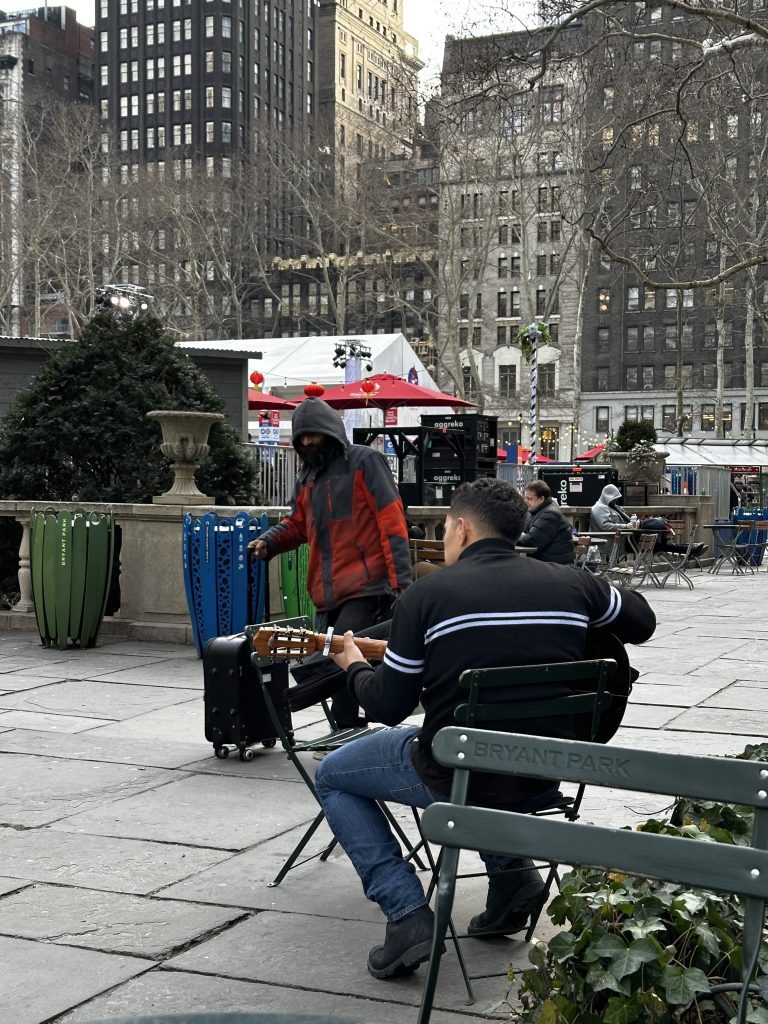
The park’s design also incorporates Whyte’s concept of “Triangulation” – the strategic placement of physical elements in a space to encourage strangers to talk to each other. This is evident in the layout of the seating areas, the chess tables, and the movable chairs that allow people to adjust their space according to their social preferences. These elements create natural opportunities for interaction, turning simple activities into shared experiences.
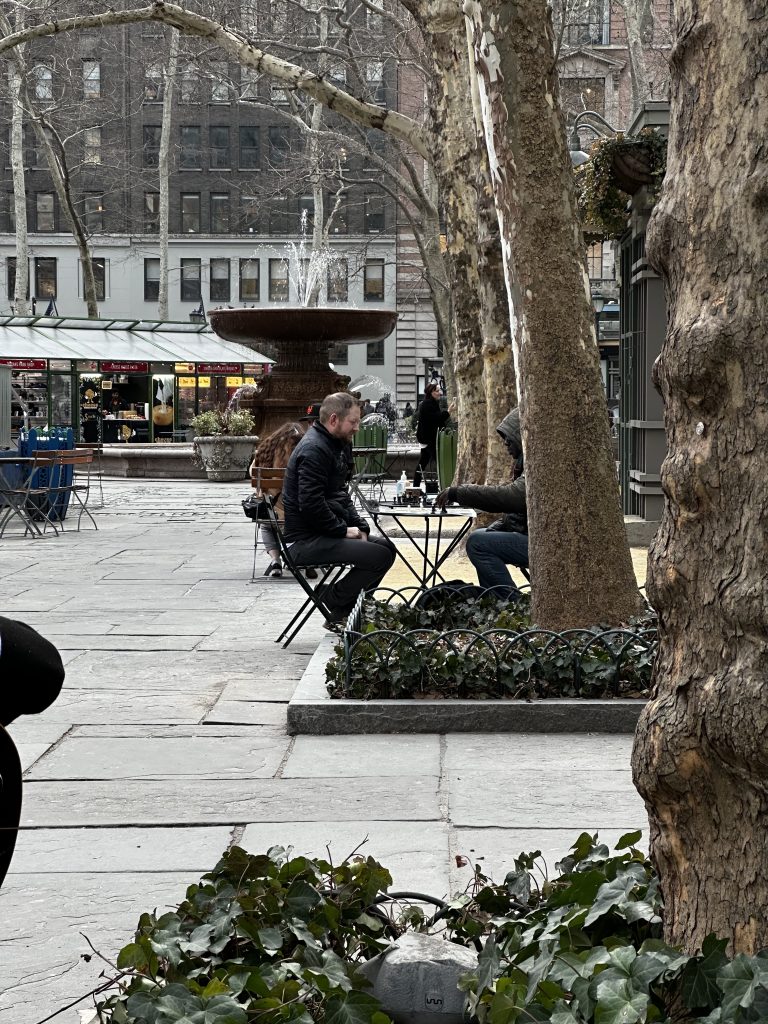
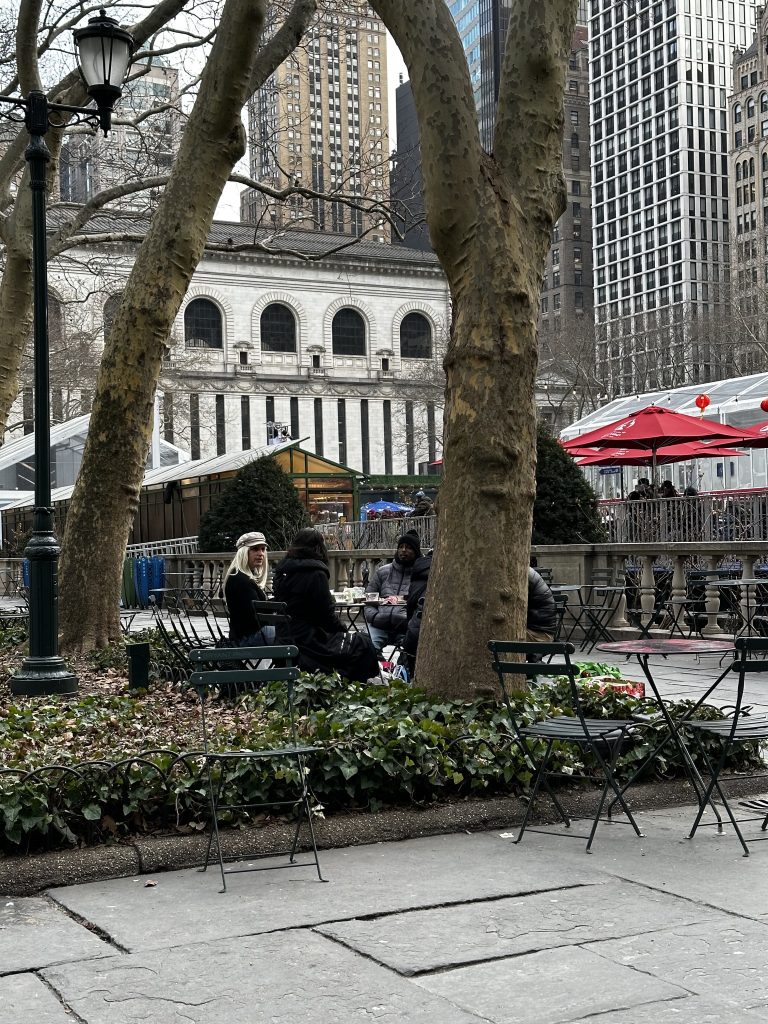
Jan Gehl’s influence is also apparent in how people interact with Bryant Park’s edges. Gehl’s edge-seeking theory explains that people naturally gravitate toward the edges of a space for comfort and security. In Bryant Park, you can observe this behavior along the park’s peripheries, where people sit against the planters or under the trees or near lampposts. Gehl describes this phenomenon as “life grows from the edges in towards the middle,” suggesting that the edges of a space are crucial in defining its social dynamics.
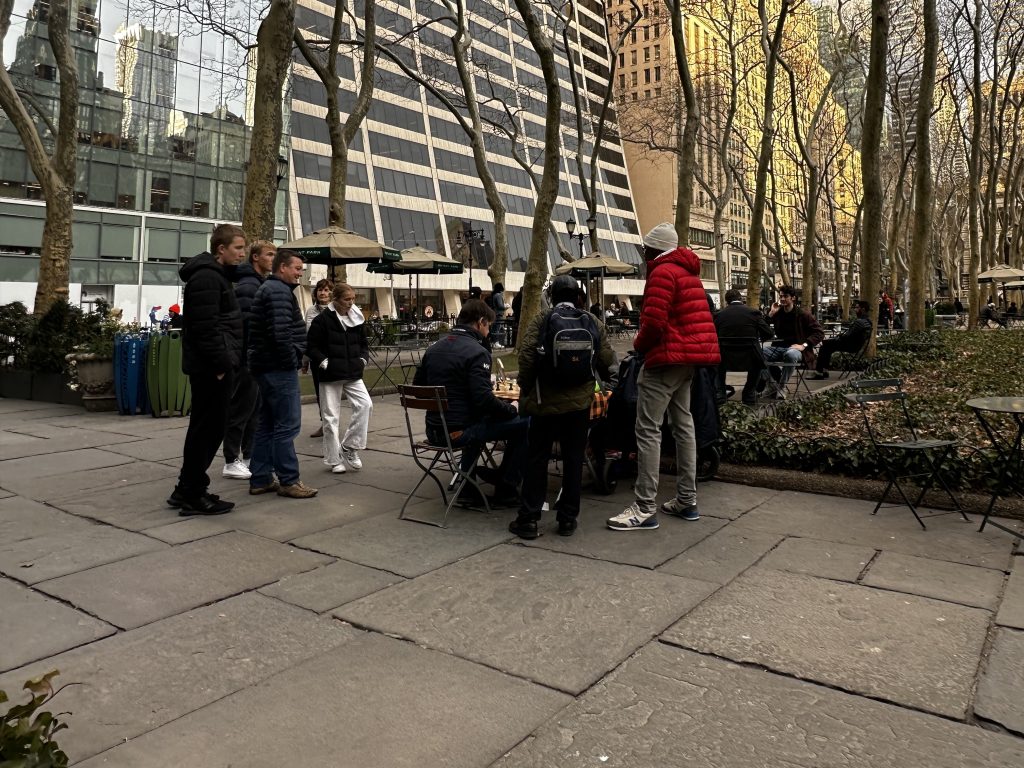
The diverse use of Bryant Park is a testament to its design, which respects the need for personal space and the human desire for community. Whether it’s someone practicing guitar, playing Pétanque, reading a book, or a group of friends gathering, the park offers many settings for various activities, each fostering a unique interaction with the space. This observation aligns with the broader principles of urban design advocated by Whyte and Gehl, where the quality of public spaces directly influences social behavior and community interaction.